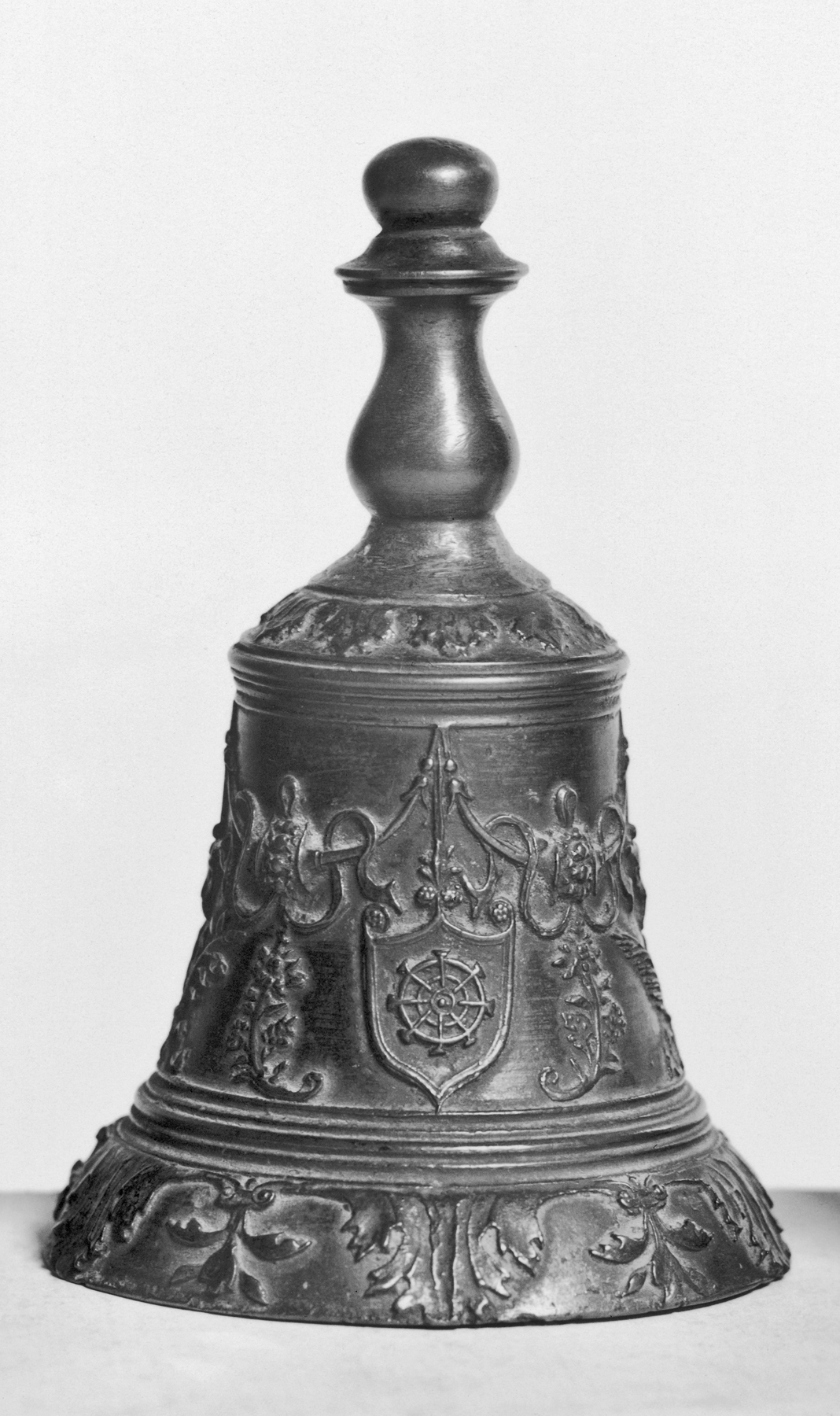Hand Bell with Two Shields
(Renaissance Europe )
This ornate bronze hand bell could be used to summon servants. The making of bells--mall ones, as well as large ones for bell towers--was a specialized craft. To produce a bell with a pleasing sound required an alloy with more tin and less copper than that used for statuary; this produced a metal that was more brittle and therefore more difficult to cast.
Hand bells were often ornamented with motifs characteristic of a specific workshop. They could be "personalized" by adding the family's coat of arms to a prepared empty shield. Here, the two shields bear a millwheel, the emblem of the noble Venetian family Molini (meaning "miller").
Provenance
Provenance (from the French provenir, 'to come from/forth') is the chronology of the ownership, custody, or location of a historical object. Learn more about provenance at the Walters.
Henry Walters, Baltimore [date and mode of acquisition unknown]; Walters Art Museum, 1931, by bequest.
Geographies
Italy, Brescia
(Place of Origin)
Italy, Venice (Place of Origin)
Measurements
5 11/16 x 3 3/4 in. (14.4 x 9.5 cm) (h. x diam.)
Credit Line
Acquired by Henry Walters
Location in Museum
Accession Number
In libraries, galleries, museums, and archives, an accession number is a unique identifier assigned to each object in the collection.
In libraries, galleries, museums, and archives, an accession number is a unique identifier assigned to each object in the collection.
54.208


